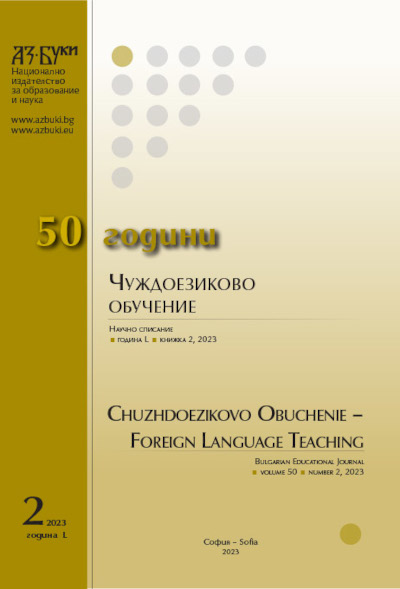Амиан Марцелин и западноарменският консонантизъм
Ammianus Marcellinus and the Western Armenian Consonantism
Author(s): Petar GoliyskiSubject(s): Social Sciences, Language studies, Language and Literature Studies, Education, Applied Linguistics, Language acquisition, Sociolinguistics, Cognitive linguistics, Vocational Education, Adult Education, Higher Education , State/Government and Education, Inclusive Education / Inclusion, Distance learning / e-learning, Pedagogy
Published by: Национално издателство за образование и наука „Аз-буки“
Summary/Abstract: If not the most essential, but at least the most noticeable difference between the two forms of the modern Armenian language – the Eastern and the Western – is the difference in the pronunciation of a large part of the consonants. In initial position and within the word, the voiceless consonants of Eastern Armenian language have voiced pronunciation in Western Armenian and the voiced consonants of the Eastern Armenian, especially the explosive ones, have voiceless pronunciation in Western Armenian. The devoicing has been already found in Old Armenian texts from the 10th – 11th centuries, but a similar case has been discovered much earlier – in the 7th century, in a text of the so-called ‘Anonymous interpreter’ (Armenian: Անանուն մեկնիչ), a commentator of ‘The Art of Grammar’ of Dionysius Thrax (170 – 90 BC), whose work had been translated into Old Armenian in the 5th century AD. In the commentaries of the Anonymous Interpreter there is an alternating use of the forms bazuk ~ pazuk ~ p'azuk (‘hand, arm’), which suggests that the devoicing of the explosive consonants in the Armenian language was a very old phenomenon. An even earlier and neglected example of devoicing of the explosive consonants in the Old Armenian language (Grabar) could be found in the Roman History of Ammianus Marcellinus, a Latin speaking author who worked in the second half of the 4th century. Writing about the events of 368 – 369 AD, Ammianus mentions an Armenian eunuch named Cylaces, which name was a Greco-Latin form of the Syriac-Armenian personal name Glak, but in its Western Armenian pronunciation, Klak. This example not only lowers the timeline of this typical Western Armenian phonetic phenomenon by as much as three centuries, but also supports the existing hypothesis that the devoicing of the explosive consonants in the Armenian language already existed in the preliterate period, that is, before 405 AD.
Journal: Чуждоезиково обучение
- Issue Year: 50/2023
- Issue No: 2
- Page Range: 194-206
- Page Count: 13
- Language: Bulgarian
- Content File-PDF

